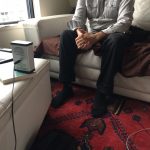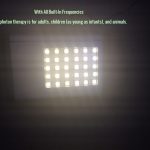How Bio-Photon Works
Bio-Photon Light Therapy
About Biophoton Light Therapy
Biophoton Light Therapy, widely used globally for over 30 years with a success rate exceeding 80%, is an advanced, non-invasive treatment now available in the United States. It harnesses the power of biophotons—light emitted by living cells—to restore cellular balance and promote natural healing.
History of Biophotons
Discovered in 1922 by Russian scientist Alexander Gurwitsch, biophotons were identified through experiments showing that onion root cells emitted ultraviolet radiation, influencing cell division in nearby roots. This “mitogenetic radiation” passed through quartz glass but not ordinary glass, suggesting a morphogenetic field organizing cellular processes. In the 1950s, advanced photomultipliers confirmed these ultraweak emissions, with significant Western research beginning in the 1960s by scientists like Terence Quickenden and Fritz Albert Popp.
How It Works
Every living cell emits over 100,000 biophotons per second, driven by electromagnetic signals that govern biochemical reactions. When these signals are disrupted by toxins, stress, or pathogens, health imbalances occur. Biophoton Light Therapy uses a device emitting targeted frequencies to neutralize disturbances, restoring coherent light emissions and enabling the body’s natural healing processes.
Benefits and Conditions Treated
This non-invasive, painless therapy involves sitting in front of a device for sessions that balance cellular frequencies. It has proven effective for conditions such as:
- Lyme Disease and co-infections
- Allergies, asthma, and arthritis
- ADD/ADHD, dyslexia, and autism
- Migraines, hormonal imbalances, and depression
- Crohn’s Disease, cardiovascular issues, and multiple sclerosis
- Heavy metal toxicity, digestive issues, and more
Post-Treatment Care
After a session, drink plenty of water and rest to allow your body to process the treatment. Avoid intense physical activity to support optimal healing.
Contact Us
Ready to experience the benefits of Biophoton Light Therapy? Contact Debra Langeman at eavtesting@outlook.com or call 310-880-4197 to schedule a consultation.
Disclaimer
Biophoton Light Therapy is not intended to diagnose, treat, cure, or prevent disease and has not been evaluated by the Food and Drug Administration. Consult your physician before starting any new treatment. This therapy supports cellular harmony, akin to tuning an orchestra, by aligning the bioenergetic frequencies of your cells.


